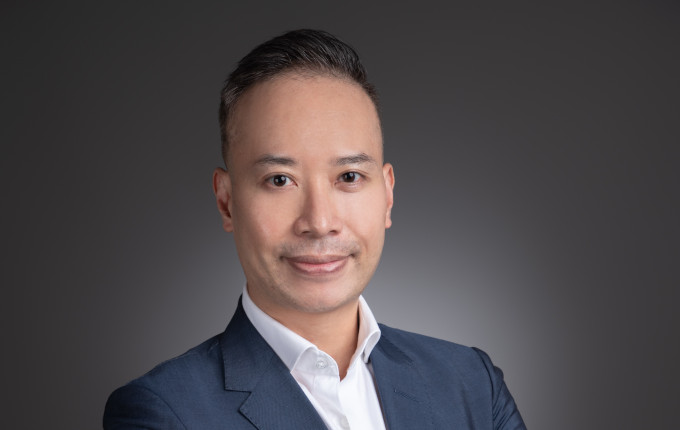Different parts of an investment portfolio have different functions and the key to good outcomes is to align these functions with a client’s objectives rather than simply following a preset strategic asset allocation, ALPS’ Vincent Au says
Vincent Au, Managing Director and Head of Investments for wealth investing firm ALPS, rolls his eyes when he talks about how benchmarks are used to excuse a portfolio manager that fails to make money for the client.
“Many fund managers are so used to using benchmarks to explain to people…They’ll say to you, ‘Oh, we’re doing well, we’re losing 10 per cent, but we’re better than the benchmark’,” he says.
“To me that doesn’t make sense.”
What makes more sense to Au is to focus on the function of a portfolio, and to apply a “core-and-satellite” approach to those functions to maximise returns above the client’s expectations. He argues that doing so liberates portfolio managers from arbitrary constraints on asset classes, and allows them to stay true to their clients’ objectives instead of blindly tracking benchmarks.
Function First
When clients entrust a pot of money with Au, they typically want that money to serve some combination of three functions, he explains.
The first function is to generate income. The part of the portfolio that serves this function should produce a steady stream of cash flow and preserve capital.
The second function is to generate returns. This part of the portfolio should produce superior risk-adjusted returns to equity markets; otherwise clients are better off simply buying the market index.
The third function is to diversify. This segment of the portfolio generates all-weather returns that are not positively correlated with the other two functions, to reduce the volatility of the portfolio as a whole.

60/40 is a crazy idea... Since 2010, the two asset classes are so dependent on each other, both asset classes do well or awfully together
Au views his clients’ objectives along these three dimensions by necessity. Because ALPS manages wealth for multiple family offices, it has to deal with a wide range of objectives. Furthermore, family offices’ demands and circumstances can add complexities, such as the intertwining of family wealth with the family business.
“For ultra-high net worth individuals, it’s not about simply offering a standardised portfolio allocation,” he says. “Instead, the focus is on truly understanding their specific goals, risk tolerances, tax considerations, and any other unique factors that shape their investment needs. Through a gradual, collaborative process, you’ll slowly build trust and gain a comprehensive view of the client’s overall financial picture.
“Only then will you be able to propose tailored investment solutions that directly address their objectives. These clients are not looking for cookie-cutter approaches. They expect a level of personalisation and customisation that reflects their distinctive circumstances.”
Freedom to Choose
Focusing on function instead of form means that mandates are not artificially constrained by traditional asset class boundaries. An income-generating investment could be a bond, or a dividend-paying stock, or private credit, for instance.
“When you look at the income portfolio, I’m not confined to just do fixed income,” Au says. “If I see dividend-yielding equity can serve the purpose, I would argue, why not? Let’s have a bit of that in the income portfolio. But if you’re fixated in your portfolio to certain asset classes, you’re limiting your opportunity set and ultimately you’re reducing your information ratio.”
It is also important to have flexibility across asset classes because the historical correlations between asset classes have not held since the Great Financial Crisis of 2008.
“60/40 is a crazy idea,” Au says, referring to the common notion of a balanced portfolio being 60 per cent equity and 40 per cent fixed income. “The correlation has become so dependent on each other because of quantitative easing. Since 2010, the two asset classes are so dependent on each other, both asset classes do well or awfully together.”
Core and Satellite
The functional approach manifests in what Au describes as core and satellite strategies within each function.
Core investments are the primary way through which the portfolio’s function is achieved, and must, therefore, carry a high conviction of achieving that function.
For instance, within the income portfolio, the core holdings might comprise a mix of high-quality, liquid assets with positive convexity – meaning that yields increase with duration – that can generate about 4 to 5 per cent of yield with fairly high confidence.
But because Au does not have to stick solely to high-grade bonds, he is able to adopt a barbell strategy that pairs those investment-quality holdings with riskier investments, such as private debt, to elevate the expected returns of the portfolio as a whole while keeping risk within acceptable levels.
In fact, Au shares that he has been using private debt for about six years, getting into the scene before it became popular. He could be an early bird because adding private debt didn’t require major changes to his mandate. That sets him apart from many other asset managers.
“They start off with a global aggregate, let’s do investment grade,” Au says. “Then they start thinking: ‘Oh, high-yield bonds are not a bad addition to the portfolio’, so they start to add a little bit to it. Then they add emerging market bonds, and eventually now they’re adding private debt.
“That’s the evolution of the typical fixed income portfolio for many fixed-income investors. But for us we took that one step ahead. We just say: ‘What’s the function?’ And private debt caught our eyes, so we just did it.”
The approach also gives Au considerable freedom to be opportunistic, since he is not confined to predetermined thresholds for asset classes. He says that such a level of discretion is particularly useful for family offices. Unlike large pension funds that have sufficient scale to be market neutral, some family office portfolios need to be able to react to changes in the markets.
Striking at Opportunities
That discretion gives rise to satellite strategies, which are opportunistic investments that address new risks and opportunities in the markets. The key limiting factor for satellite allocations is that whatever is needed to fulfil the portfolio’s objectives must be met first by the core investments; whatever isn’t needed to meet those goals can be used for satellite investments.
At the moment, Au sees potential opportunities in the nexus of geopolitical turbulence, high demand for refinancing among companies and the “higher for longer” interest rates environment.
“New issuance is going to be great, so any manager that can participate in the primary market can likely do quite well,” he says.
Although bankruptcies are unlikely to be widespread, distressed companies will probably emerge more frequently, he reckons.

If we have not been able to achieve the clients’ objectives, then I don't think we would still be in business
“We like managers that have the capability and capacity to talk to these companies and take advantage of it,” Au says.
Au stresses that the satellite strategy is not a predefined alpha allocation, which sets the core-satellite approach apart from allocation-based portfolio construction methods.
“For us, it’s a truly opportunistic approach. If I don’t see anything worthwhile doing, I can just not do it,” he says. “It’s not like from the pension world where if I choose not to do it, I really need to go back to the investment committee and argue against both the actuary and the consultant before I can do something.”
Au argues that his function-centric approach and the core-satellite implementation, taken as a whole, means that portfolio managers must try their best to beat their clients’ goals, instead of merely beating a convenient benchmark.
He declines to share numbers on how well the strategy has worked, but notes that ALPS has been in business since 2002 following a management buy-out from Julius Baer and that he has been at the firm since 2018.
“If we have not been able to achieve the clients’ objectives, then I don’t think we would still be in business,” he says.
__________
[i3] Insights is the official educational bulletin of the Investment Innovation Institute [i3]. It covers major trends and innovations in institutional investing, providing independent and thought-provoking content about pension funds, insurance companies and sovereign wealth funds across the globe.


